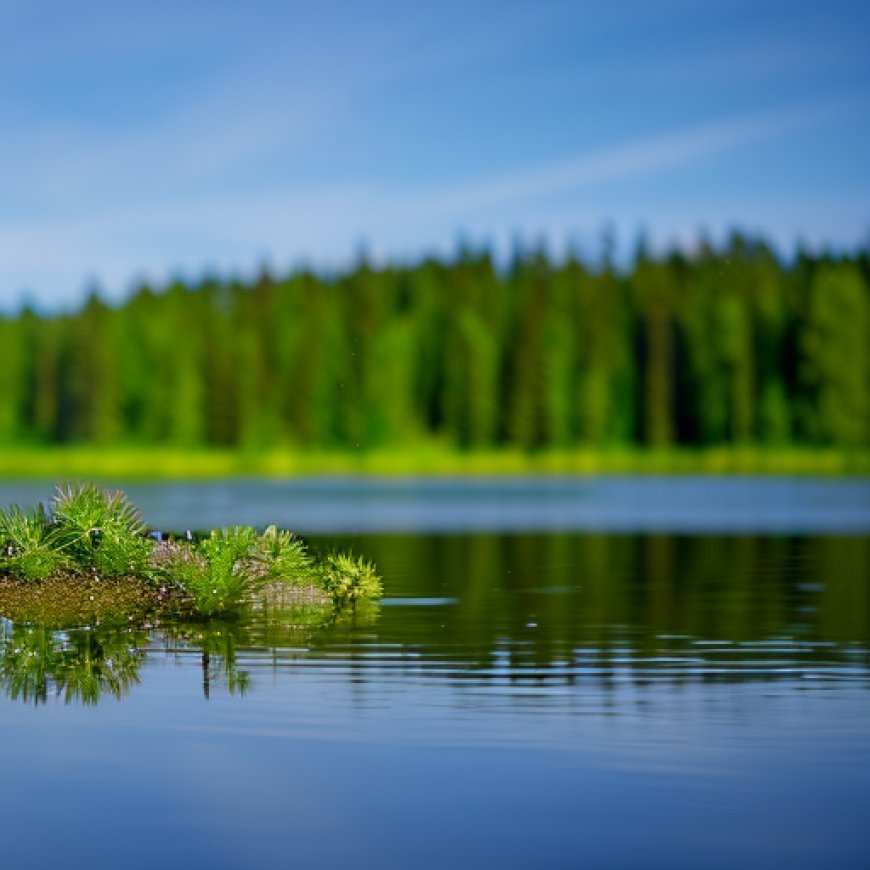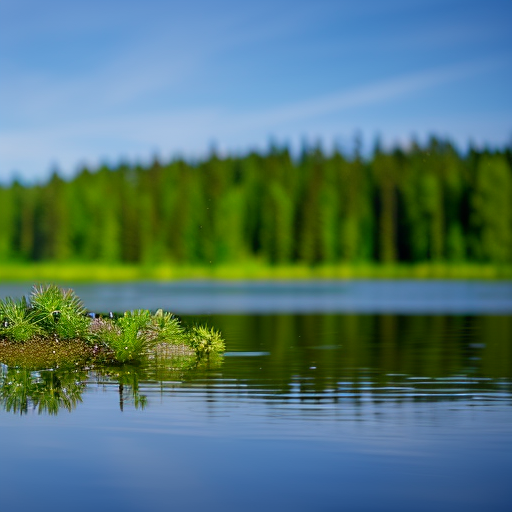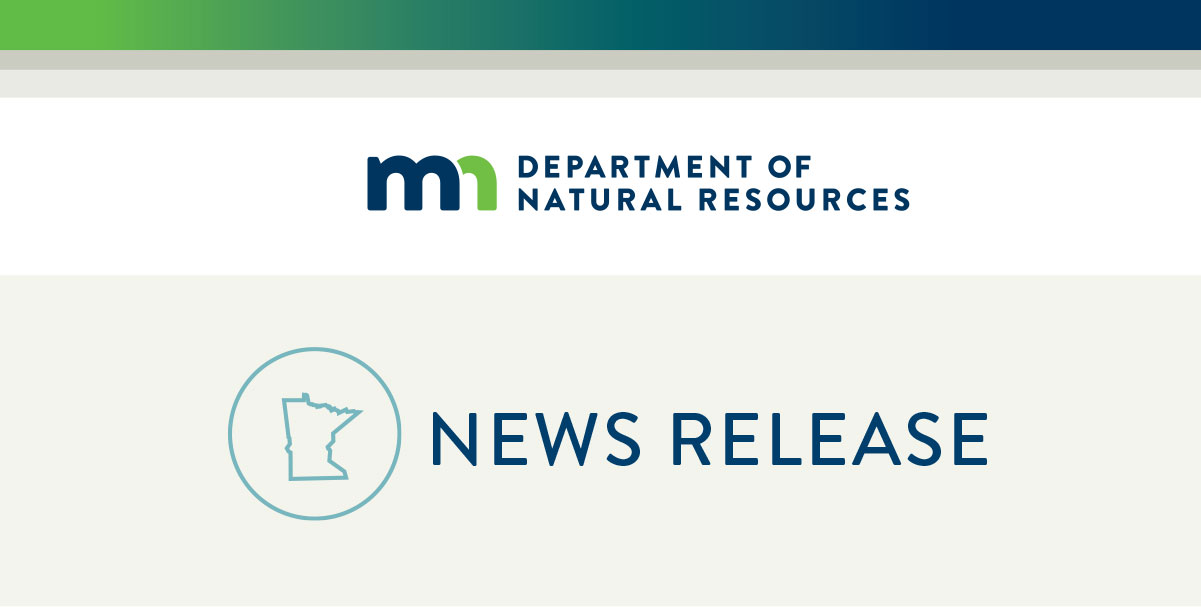Starry Stonewort confirmed in Blackduck Lake in Beltrami County : Aug 3, 2023 | News release
Starry Stonewort confirmed in Blackduck Lake in Beltrami County ... MN DNR


The Presence of Invasive Algae Starry Stonewort Confirmed in Blackduck Lake

The Minnesota Department of Natural Resources (DNR) has recently verified the existence of the invasive algae starry stonewort in Blackduck Lake, located near the town of Blackduck in Beltrami County.
Survey Findings and Treatment Options
During an aquatic plant survey funded by the Legislative-Citizen Commission on Minnesota Resources (LCCMR) and conducted in collaboration with researchers from the New York Botanical Garden, Minnesota DNR staff discovered starry stonewort in Blackduck Lake. This lake is in close proximity to three other lakes where the presence of starry stonewort had been previously confirmed. The available treatment options for managing this invasive species may include hand pulling, herbicide applications, or other appropriate methods.
Starry stonewort has now been identified in 25 water bodies across Minnesota since its initial confirmation in the state in 2015.
Importance of Early Detection and Management
Although starry stonewort has never been completely eradicated from any lake or river in the United States, proactive treatment or careful removal can help mitigate the risk of its spread and alleviate the associated nuisance impacts on water-related recreational activities. Early detection plays a crucial role in effective management strategies.
Identification and Reporting
Starry stonewort resembles some native aquatic plants. However, during late summer and early fall, its small white star-shaped bulbils become more visible, making it easier to distinguish from other aquatic plants. Detailed information on how to identify starry stonewort can be found on the Minnesota DNR’s website. If individuals suspect the presence of starry stonewort or any other invasive species in a lake or river, they are encouraged to report it to the DNR by contacting their respective area invasive species specialist.
Impact and Spread
Starry stonewort has the ability to form dense mats, which can disrupt recreational activities on lakes and compete with native plants. The primary mode of spread is through the improper cleaning of trailered boats, personal watercraft, docks, boat lifts, anchors, or other water-related equipment.
Minnesota’s Legal Requirements
Regardless of whether a lake contains invasive species or not, Minnesota law mandates the following actions:
- Clean watercraft, trailers, and equipment to remove aquatic plants and prohibited invasive species.
- Drain all water and leave drain plugs out during transport.
- Dispose of unwanted bait in the trash.
- Never release bait, plants, or aquarium pets into Minnesota waters.
- Dry docks, lifts, and rafts for 21 days before moving them from one waterbody to another.
Additionally, the following steps can further reduce the risk of spreading aquatic invasive species:
- Decontaminate watercraft and equipment – find free stations on the courtesy decontamination page of the DNR website.
- Spray with high-pressure water or rinse with very hot water (120 degrees for at least two minutes or 140 degrees for at least 10 seconds).
- Dry watercraft and equipment for at least five days before using them in another water body.
For more information, please visit the aquatic invasive species page of the DNR website.
Funding and Project Details
The Blackduck Lake aquatic plant survey was made possible through funding provided by the Minnesota Environment and Natural Resources Trust Fund, as recommended by the LCCMR under Project 2021-055: Protecting Minnesota’s Beneficial Macroalgae – All Stoneworts Aren’t Starry.
SDGs, Targets, and Indicators
| SDGs | Targets | Indicators |
|---|---|---|
| SDG 14: Life Below Water | Target 14.1: By 2025, prevent and significantly reduce marine pollution of all kinds, particularly from land-based activities, including marine debris and nutrient pollution | Indicator not mentioned in the article |
| SDG 15: Life on Land | Target 15.8: By 2020, introduce measures to prevent the introduction and significantly reduce the impact of invasive alien species on land and water ecosystems and control or eradicate the priority species | Indicator not mentioned in the article |
| SDG 6: Clean Water and Sanitation | Target 6.3: By 2030, improve water quality by reducing pollution, eliminating dumping and minimizing release of hazardous chemicals and materials, halving the proportion of untreated wastewater, and substantially increasing recycling and safe reuse globally | Indicator not mentioned in the article |
1. Which SDGs are addressed or connected to the issues highlighted in the article?
- SDG 14: Life Below Water
- SDG 15: Life on Land
- SDG 6: Clean Water and Sanitation
The issues highlighted in the article are related to the presence and management of the invasive algae starry stonewort in Blackduck Lake. This is directly connected to SDG 14, which focuses on life below water, as the presence of invasive species can have negative impacts on aquatic ecosystems. Additionally, SDG 15, which focuses on life on land, is relevant as the article mentions the need to control or eradicate invasive alien species to protect land and water ecosystems. SDG 6, which focuses on clean water and sanitation, is also connected as the article discusses the importance of improving water quality and preventing pollution.
2. What specific targets under those SDGs can be identified based on the article’s content?
- Target 14.1: By 2025, prevent and significantly reduce marine pollution of all kinds, particularly from land-based activities, including marine debris and nutrient pollution
- Target 15.8: By 2020, introduce measures to prevent the introduction and significantly reduce the impact of invasive alien species on land and water ecosystems and control or eradicate the priority species
- Target 6.3: By 2030, improve water quality by reducing pollution, eliminating dumping and minimizing release of hazardous chemicals and materials, halving the proportion of untreated wastewater, and substantially increasing recycling and safe reuse globally
Based on the article’s content, the specific targets that can be identified are Target 14.1 under SDG 14, Target 15.8 under SDG 15, and Target 6.3 under SDG 6.
3. Are there any indicators mentioned or implied in the article that can be used to measure progress towards the identified targets?
No indicators are mentioned or implied in the article that can be used to measure progress towards the identified targets.
Behold! This splendid article springs forth from the wellspring of knowledge, shaped by a wondrous proprietary AI technology that delved into a vast ocean of data, illuminating the path towards the Sustainable Development Goals. Remember that all rights are reserved by SDG Investors LLC, empowering us to champion progress together.
Source: dnr.state.mn.us

Join us, as fellow seekers of change, on a transformative journey at https://sdgtalks.ai/welcome, where you can become a member and actively contribute to shaping a brighter future.







